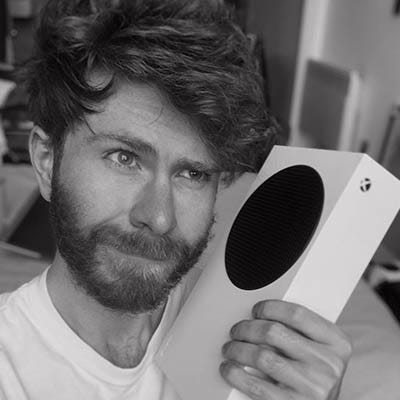Creating and integrating the many faces of Horizon Forbidden WestCreating and integrating the many faces of Horizon Forbidden West
"The biggest challenge was that we needed to believably populate the entire world again."

There are plenty of things to admire about Horizon Forbidden West, including the amount of detail and nuance developer Guerrilla Games managed to transpose onto the virtual faces that give each character a distinct persona.
During a recent GDC 2022 talk, Horizon Forbidden West lead character artist Arno Schmitz explained the team created 168 high-quality heads in three years, which was nothing short of a seismic undertaking.
After shipping Horizon Zero Dawn, Guerrilla wanted to deliver something bigger and better, and that meant creating more faces with more detail in a similar amount of time. Because the bar for quality was going to be much higher, Schmitz said the team couldn't rehash their work on Zero Dawn.
"The biggest challenge was that we needed to believably populate the entire world again. This required enough variation and faces of all ages, ethnicities, and genders," said the veteran developer, who's spent close to a decade at Guerrilla.
Schmitz noted how in a story-driven games faces are absolutely fundamental to the experience because emotive characters deliver immersion.
To help create a platter of hyper-realistic faces, Guerrilla invested in a selection of high-quality rigs and tools that could be used to generate and tweak facial features. The company also enlisted tech specialist 3lateral to help with assets and technical challenges. Notably, 3lateral also created a custom tool called the "Gene Splicer" that allowed new faces to be created by mixing pre-existing assets, letting Schmitz's team support the story department with unique faces for named characters and an array of NPCs.

Once those resplendent mugs had been pulled together, Guerrilla had to start integrating them into the wider game world. Schmitz explained how faces are created in a "sterile" environment and how grounding them in the diverse biomes of Forbidden West required clear intent and one or two tricks.
"We had to make sure the environment affects the characters. Aloy gets wet from water or when it rains, and after spending time in the hot desert she starts to sweat and blush. We made extensive use of decals. These behave like little stickers, and we can move them around very precisely. We most often use them to add dirt to characters," said Schmitz.
He also explained how Guerrilla would use costuming to hide the fact that some faces were being repurposed. For instance, heavy tribal facepaint could be applied to a hero face so it could be reused without people noticing. It was an effective technique because, well, slapping layers of paint on someone would make them fairly hard to spot. But it also worked because Guerrilla had created some pretty impressive wrinkle tech.
"One thing that's cool about faceprint is that the cavity map unique to each head influences the transparency of the faceprint. This way, the unique wrinkles for each person carry over through the faceprint helping to hide the reuse of content," Schmitz continues, explaining how the team delivered on its promise of realism even after caking its characters in paint.
There were some missteps along the way, too. Schmitz suggested the team became too preoccupied with reviewing the cinematic quality rigs in Matya, resulting in them overlooking how content might look in-engine.
"During the game experience you'll often see lower LODs. In hindsight, we should've spent more time checking the content in-engine from various distances rather than focusing so much on the rig in Maya," he admitted.

He also advised developers working in the same discipline to bake NormalMaps per platform, and noted how focusing heavily on the PlayStation 5 version of Forbidden West -- the title is also available on PlayStation 4 -- resulted in characters looking slightly too smooth on last-generation hardware.
"We baked all of our maps for the PS5 version, and that means things are slightly misaligned on the lower LODs, making the characters look slightly too smooth on the PS4 as a result," he continued. "This can mainly be seen in the deep wrinkles. By baking additional NormalMaps for the lower LODs, we could've solved this issue and brought the PS4 version even closer to the PS5 version."

Finally, Schmitz implored anyone working on a wide-array of faces to use batching tools to make life infinitely easier. After all, game development is hard enough as it is.
"You really need batching tools. Working in this area, you need to be able to do things fast and on many assets. We had to absorb shader changes, textures changes, skinning and rig changes, and many optimisation passes. So having support from your tools department is key in order to quickly integrate more than a hundred head rigs and textures," he concluded.
Read more about:
FeaturesAbout the Author
You May Also Like

